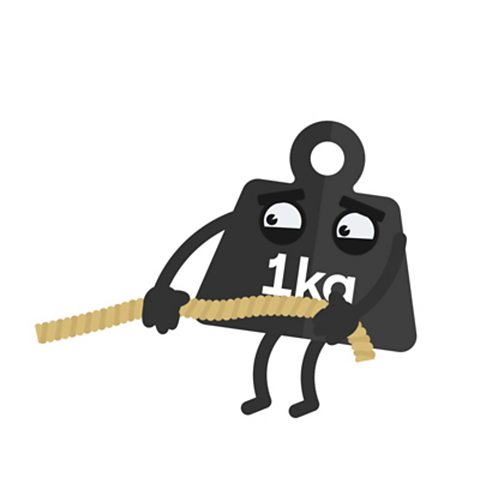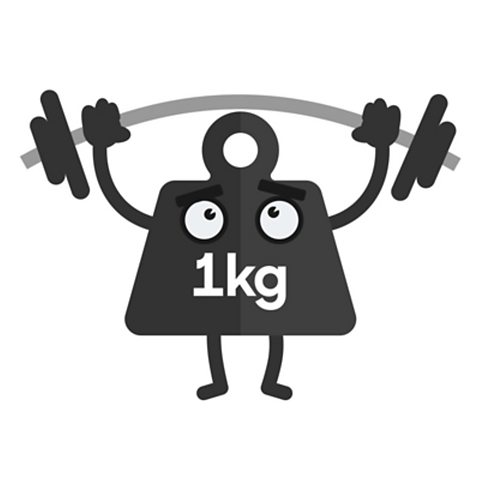In today's lesson…
We're going to investigate forces and the effect that they have on objects and the human body.
We'll develop our investigative skills and gather evidence through doing things, taking note of what happens. We'll learn all about air resistance and how it acts to slow objects (and people!) down. It might be surprising, but the aim of this investigation will be to slow yourself down using all that you have learnt about air resistance.
Elinor and Jody feel the force
Forces are important to cyclists like Elinor Barker and Jody Cundy, as overcoming air resistance can mean the difference between a bronze and a gold medal. In this short film, they investigate forces at the National Cycling Centre.
Elinor Barker:
Hi, I'm Elinor Barker.
Jody Cundy:
And I'm Jody Cundy.
Elinor Barker:
This velodrome in Manchester is the home of British cycling.
Jody Cundy:
And today we're gonna show you some of the science behind our gold medal success.
Commentator:
Here comes Great Britain now.
Commentator:
He's picked it up in the closing stages to set a new world record.
Jody Cundy:
I specialize in the sprint and short events. I've won 12 world titles and four Paralympic gold medals, the most recent the two that I won in Rio.
Commentator:
The women's team pursuit final, Great Britain going for a third gold, less than a second between the two teams. Elinor Barker at the moment at the front for Great Britain.
Elinor Barker:
Rio was incredible. Yeah, it was best time of my life.
Commentator:
The gun goes, it's another gold medal, and need I say it, it is another world record. They've absolutely smashed it.
Elinor Barker:
Don't know if it's gonna ever get any better than that. It's, yeah, it's absolutely amazing.
Commentator:
That was a simply breathtaking ride.
Elinor Barker:
It's not just about how much work we put into training, we've got a huge team of sport scientists and sports engineers behind us as well to help us to keep on top of our game.
Jody Cundy:
Science is really important within top level cycling. We have physiotherapists, nutritionists, aerodynamicists, mechanics. You name it, we've got pretty much somebody from each discipline trying to work out how to make us go faster.
Peter Batley:
I am Peter Batley and I am one of the sports engineers and aerodynamic experts working at British cycling.
Peter Batley:
The biggest challenge for us, in terms of helping the athletes to go fast is, is without a doubt air resistance.
Peter Batley:
A cyclist is literally propelling themselves through air and that means that they need to push those air molecules out of the way, and in doing so those air molecules push back and that's what you feel as drag. When you're cycling at 60, 70 kilometres and hour suddenly you can really feel it. It's becoming uh, almost a thick soup that you've got to propel yourself through.
Peter Batley:
So there are a few ways to minimise air resistance. One simple one is to just try and make ourselves smaller. So the smaller you can make yourself as an object from the front the less air you're going to be colliding with. So a lot of the positions we work on with the riders uh, is about creating shapes that encourage the wind to flow over the rider or the bike, to prove their abilityto cut through the air and reduce that drag force they experience.
Jody Cundy:
It's not just the position on the bike that can reduce air resistance. All the components of the bike can also be streamlined to make them faster.
Peter Batley:
So these disc wheels are made entirely of carbon fibre. They're super light and as you can see there, a really slippery stream lined surface. There's just nothing to catch the, the wind. Nothing to create air resistance.
Jody Cundy:
You really do notice the difference in the speed that you get from using these disc wheels.
Peter Batley:
So a helmet like this is probably one you're all familiar with, comfortable, loads of vents to keep you cool, but on the track we wanna go fast, so have to make some sacrifices in comfort and use something like this.
Jody Cundy:
It's teardrop shaped, so the air flow sticks to your back and goes off in a nice smooth way. It's got integrated visor into the front, again, to smooth the air flow around the front of the face, and no vents on this one, so it starts getting pretty hot in here.
Jody Cundy:
One thing that I can do, which not many athletes can do is I can also aerodynamically shape my leg. So we just make it a really nice teardrop shape, that just cuts through the air.
Peter Batley:
The skin suits are designed with a fabric that air actually flows faster over than skin.
Jody Cundy:
It's all one piece. Definitely something you, you wouldn't wanna go out in, but um, yeah, it's, it's, it's what you wanna race in.
Elinor Barker:
I'm about to test out how big a difference air resistance makes by doing some laps with aerodynamic kit and some laps without aerodynamic kit.
Male with grey hair:
Three, two, one, go.
Peter Batley:
Okay, so with all the aerodynamic kit on you did a 46.68 seconds.
Elinor Barker:
This time I'm having another go with less aerodynamic clothing, it's all a lot baggier and I'm gonna have a less aero position as well.
Elinor Barker:
I'm gonna try just as hard as I did the first time.
Male with grey hair:
Two, one, go.
Peter Batley:
So that second run clocked in 50.75. That's a difference of 4.07 seconds.
Elinor Barker:
Quite a lot then.
Peter Batley:
Yeah. Big, big difference.
Elinor Barker:
In cycling that's the difference between getting a gold medal or not even being on the podium at all.
Elinor Barker:
The baggy top really felt like a massive parachute and I could really feel the wind slow me down.
Elinor Barker:
It's such a massive part of what we do to get as fast as possible that uh, yeah, I'm glad to see that it is actually all the work that we do is worthwhile.
Elinor Barker:
It's so important that kids are learning about air resistance. We always need sport scientists and the world of aerodynamics is always changing, so who knows, it could be the kids that are doing this investigation who are making us go faster in 20 years time.
How to do the Forces Investigation
This short film gives a step by step guide to conducting the Forces investigation. It is designed to be used alongside the activity sheet found with our teaching resources.
Explore air resistance
Find out more about air resistance. Click on the image below and then explore the labels to find out more.
Putting air resistance to the test
Your teacher will split you into groups for the investigation.
What you will do today:
Go outside and run a timed 50 metre run as a baseline measurement. Remember to run your fastest!
Come inside and plan your race outfit, which will use air resistance to slow you down.
Use the various materials you have chosen to make your outfit.
Go back outside and time your 50 metre runs again. Run your fastest again - no cheating!
Discuss the results
How do forces affect my speed?
Has the investigation given you an answer?
Did you find a difference in the before and after times?
Did all the groups get the same result?
If there was a difference, what could have caused it?
Are the results valid?
Did we control variables well?
Was our measurement accurate?
How could it be improved?
Write a summary
“I used to think that… but now I know that… because…”


